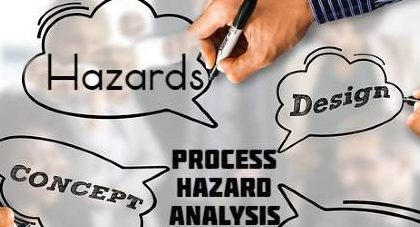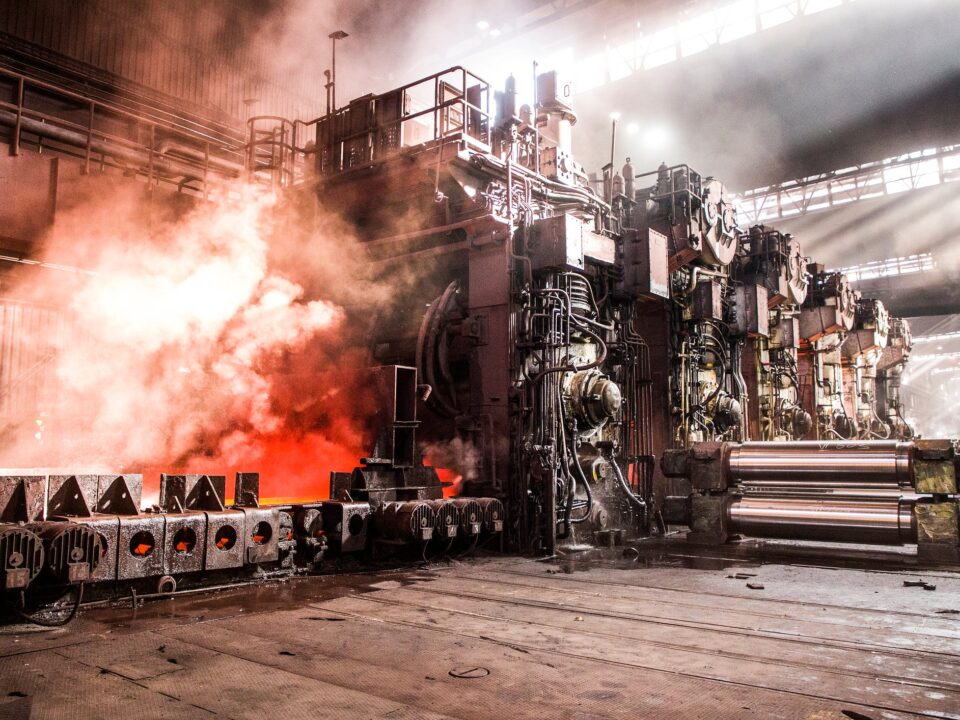Mitigating Risk in the Petrochemical Sector: Exploring HAZID Study Benefits

(PPE) personal protective equipment overview
July 14, 2023
Understanding the Power of Hazop Study in Industrial Process Safety by top safety consultant
July 15, 2023Mitigating Risk in the Petrochemical Sector: Exploring HAZID Study Benefits
Every industry faces risks, but when it comes to the petrochemical sector, these risks can have catastrophic consequences. The handling and processing of hazardous materials in this industry require a comprehensive approach to mitigate potential dangers. That’s where HAZID studies come into play. In this article, we will delve into the world of risk mitigation in the petrochemical sector and explore the benefits that HAZID studies bring.
Join us on a journey as we uncover the power of HAZID studies and how they can safeguard operations, reduce incidents, and save lives. We will demystify the process, providing you with a step-by-step guide to conducting successful studies. Additionally, we will share real-life success stories that demonstrate how HAZID studies have played a pivotal role in averting disasters. By the end of this article, you will be inspired by the transformative potential of HAZID studies in mitigating risk within the petrochemical sector.
Setting the Stage: Understanding the Importance of Risk Mitigation in the Petrochemical Sector
The petrochemical sector, with its vast infrastructure and complex operations, plays a pivotal role in powering our modern world. From refining crude oil to producing essential chemical compounds, this industry fuels our transportation, provides materials for countless products, and contributes significantly to global economic growth. Yet, it is not without its risks.
The very nature of the petrochemical sector exposes it to potential hazards that can have catastrophic consequences. Accidents or incidents resulting from these hazards can lead to devastating environmental damage, loss of life, and severe financial repercussions. Therefore, understanding and mitigating these risks is of paramount importance.
In this section, we will delve into why risk mitigation holds such significance in the petrochemical sector. We will explore how identifying potential dangers and implementing preventive measures can not only safeguard operations but also protect the environment and preserve human lives. By comprehending the gravity of risk mitigation in this industry, we can inspire a change that promotes safety as a top priority while fostering innovation and progress.
The Power of HAZID Studies: Exploring the Benefits
Within the vast and intricate petrochemical sector, where risks loom ominously, HAZID studies emerge as a beacon of hope and resilience. These studies possess an unparalleled power to identify potential hazards and mitigate risks before they manifest into catastrophic events. By meticulously scrutinizing every aspect of operations, from design to implementation, HAZID studies offer a comprehensive understanding of vulnerabilities and provide invaluable insights for effective risk management.
Imagine a world where industries can predict danger with precision and take proactive measures to ensure safety. That is precisely what HAZID studies bring to the table in the petrochemical sector. With their detailed examination of processes, equipment, materials, and human factors, these studies empower organizations to make informed decisions that safeguard lives, protect assets, and fortify reputations. By shedding light on potential pitfalls before they become disastrous realities, HAZID studies pave the way for a future where accidents are reduced to mere anecdotes rather than tragic headlines.
Unraveling the Mystery: Demystifying HAZID Studies in the Petrochemical Sector with best safety consultant
Within the intricate tapestry of risk management in the petrochemical sector, HAZID studies stand as a beacon of knowledge, illuminating the path towards a safer future. But what exactly are these enigmatic studies? HAZID, which stands for Hazard Identification, is a systematic and comprehensive process that helps identify potential hazards and risks associated with operations in the petrochemical industry. Essentially, it involves a collaborative effort of multidisciplinary teams to analyze and evaluate various aspects of a facility or project to ensure safety and prevent accidents.
Demystifying HAZID studies requires delving into their core principles. These studies serve as invaluable tools for understanding and mitigating risks by meticulously examining every nook and cranny of an operation. By conducting thorough analyses, including process flows, equipment layouts, material handling procedures, and human factors, HAZID studies provide an all-encompassing assessment that leaves no stone unturned. They enable organizations to identify potential hazards that might arise during different stages of operations – from design to construction to maintenance – allowing proactive measures to be implemented. Through this demystification process emerges a profound realization: by unraveling the secrets of risk within the petrochemical sector through HAZID studies, we unlock possibilities for enhanced safety measures and brighter futures.
The Bridge to Success: How HAZID Studies Can Mitigate Risk and Safeguard Operations
When it comes to navigating the complex landscape of the petrochemical industry, organizations must be equipped with the right tools to ensure the safety of their operations. This is where HAZID studies come into play, acting as a vital bridge that connects potential risks with effective mitigation strategies. By meticulously examining and analyzing potential hazards, these studies provide invaluable insights that enable companies to make informed decisions, safeguard their operations, and protect their most valuable asset: people.
HAZID studies act as a compass guiding organizations through turbulent waters, allowing them to anticipate and address risks before they escalate into catastrophic incidents. By identifying hazards at an early stage, these studies empower companies to establish robust preventive measures and emergency response plans. The ultimate goal? To minimize the probability of accidents occurring, mitigate their potential consequences if they do happen, and ultimately create an environment where workers can perform their tasks confidently and safely. Through this proactive approach, HAZID studies not only protect lives but also promote a culture of continuous improvement within the petrochemical sector.
A Crystal Ball for Safety: Predictive Insights from HAZID Studies in the Petrochemical Sector
Imagine having the ability to gaze into a crystal ball and predict potential risks and hazards within the complex realm of the petrochemical sector. While we may not possess mystical powers, HAZID studies offer a remarkably effective means of achieving just that. These studies act as a powerful tool, providing invaluable predictive insights that enable companies to proactively identify and mitigate risks before they manifest into catastrophic incidents.
HAZID studies serve as a unique window into the future, allowing stakeholders to envision various scenarios and assess their consequences. By meticulously examining every aspect of operations, from design plans to operational procedures, HAZID studies can uncover hidden dangers that might otherwise remain undetected. This foresight empowers decision-makers to implement comprehensive risk management strategies with confidence.
Guiding Your Way: Step-by-Step HAZID Study Process
To achieve successful risk mitigation in the petrochemical sector, a meticulous and comprehensive approach is required. The step-by-step HAZID (Hazard Identification) study process serves as a guiding light, illuminating the path towards a safer and more secure operation.
Step 1: Assembling the Dream Team – Getting the Right Personnel in Place
A crucial first step in conducting a HAZID study is putting together a team of experts who possess the necessary knowledge and experience. This dream team should consist of individuals from various disciplines, including process engineers, safety specialists, operations personnel, and project managers. By harnessing their collective expertise, synergistic collaboration becomes possible.
Step 2: Identifying the Scope – Defining the Boundaries for a Successful HAZID Study
The second phase involves clearly outlining the boundaries and scope of the study. By defining these parameters early on, potential risks can be identified within specific areas or processes. This ensures that no critical elements are overlooked and that all aspects of the operation are thoroughly evaluated.
Step 3: Mapping Out the Hazards – Properly Identifying Potential Risks and Dangers
In this phase, an eagle-eyed examination commences to identify potential hazards within each defined area. Through meticulous scrutiny of equipment, processes, materials used, and surrounding environment factors such as weather conditions or geographical considerations—every conceivable threat is uncovered.
Step 4: Analyzing Consequences – Understanding the Potential
Step 1: Assembling the Dream Team – Getting the Right Personnel in Place
When it comes to mitigating risk in the complex and high-stakes world of the petrochemical sector, assembling the right team of experts is paramount. A HAZID study, which stands for Hazard Identification, plays a crucial role in identifying potential hazards and developing effective risk mitigation strategies. To carry out this study successfully, it is essential to have a multidisciplinary team with diverse expertise.
This dream team should consist of professionals well-versed in various aspects such as process engineering, safety management, environmental science, instrumentation and control systems, emergency response planning, and legal compliance. Each member brings their unique perspective to the table, allowing for comprehensive hazard identification and analysis. By harnessing their collective wisdom and experience, this dream team ensures that no stone is left unturned in safeguarding operations from potential risks.
Step 2: Identifying the Scope – Defining the Boundaries for a Successful HAZID Study
When embarking on a HAZID (Hazard Identification) study in the petrochemical sector, one of the crucial initial steps is to identify the scope and define clear boundaries. This process ensures that all relevant aspects are considered and enables a focused approach to risk mitigation.
In this step, experts meticulously analyze the project or facility under study, taking into account various factors such as location, size, complexity, processes involved, and potential hazards associated with each stage. By defining these boundaries upfront, the HAZID study can address risks comprehensively and avoid overlooking critical areas that may have significant consequences.
Successful scope identification involves collaboration between multidisciplinary teams with expertise in engineering design, operations management, health and safety regulations, and risk analysis. Together, they determine which systems or components should be included in the study based on their relevance to safety. By establishing these boundaries explicitly at an early stage of the HAZID process, potential risks are effectively identified and mitigated while ensuring optimal resource allocation.
Step 3: Mapping Out the Hazards – Properly Identifying Potential Risks and Dangers
In the intricate web of the petrochemical sector, identifying potential risks and dangers is comparable to deciphering a complex puzzle. Step three of a HAZID study plays a vital role in this process, as it focuses on mapping out these hazards with meticulous precision. By undertaking this crucial step, professionals within the industry gain invaluable insights into the potential threats that lurk within their operations.
During this phase, an interdisciplinary team of experts meticulously scrutinizes every nook and cranny, analyzing equipment functionality, operational procedures, and environmental factors. By combining their collective wisdom and knowledge, they uncover hidden vulnerabilities that might otherwise go unnoticed. The objective is not merely to identify hazards but also to understand their root causes and potential consequences. This comprehensive approach empowers organizations to develop effective mitigation strategies that bolster safety measures while enhancing overall operational efficiency.
Step 4: Analyzing Consequences – Understanding the Potential Impact of Identified Hazards
In the realm of risk assessment, the quest for knowledge is fueled by the desire to uncover hidden dangers and potential catastrophes. Enter step four of the HAZID study process: analyzing consequences. This crucial phase delves into the depths of each identified hazard, seeking to understand its potential impact on people, assets, and the environment. By examining these consequences with meticulous attention to detail, organizations in the petrochemical sector can gain invaluable insights that guide their risk mitigation strategies.
During this analytical journey, a multitude of factors come into play. The severity and magnitude of potential incidents are considered alongside their likelihoods. Expertise from various disciplines converges to assess not only immediate effects but also cascading consequences that may emerge from a single event. The goal is not just to identify risks but also to comprehend their broader implications, enabling proactive measures that render disasters preventable.
Step 5: Evaluating Risk Levels – Assessing the Likelihood and Severity of Potential Incidents
Now that we have identified potential hazards in the previous step, it is crucial to evaluate their risk levels by assessing both the likelihood and severity of potential incidents. This step allows us to prioritize our efforts and allocate resources efficiently, ensuring a targeted approach towards risk mitigation.
During this evaluation process, various factors come into play. We consider the probability of an incident occurring based on historical data, industry standards, and expert judgment. Simultaneously, we delve into the severity of each potential incident by examining its possible consequences on human life, environment, infrastructure, and economic stability.
By thoroughly assessing the likelihood and severity of incidents through a systematic approach, we can gain a comprehensive understanding of the risks involved. This knowledge empowers us to make informed decisions concerning risk prioritization and allocation of resources for prevention measures or emergency response plans. Ultimately, embracing this evaluation process boosts confidence in our ability to safeguard operations within the petrochemical sector.
Step 6: Developing Mitigation Strategies – From Prevention to Emergency Response, A Comprehensive Approach
As we delve into the realm of developing mitigation strategies in the petrochemical sector, we embark on a journey that encompasses both prevention and emergency response. The goal is to create a comprehensive approach that safeguards not only operational efficiency but also the well-being of workers and the environment.
At its core, developing mitigation strategies involves analyzing potential risks identified during the HAZID study and devising proactive measures to prevent incidents from occurring. This multifaceted approach requires careful consideration of engineering controls, administrative procedures, and worker training programs. By implementing robust safety measures, such as double-layered containment systems or automated shutdown mechanisms, we can significantly reduce the likelihood of accidents.
Step 7: Implementing, Monitoring, and Reviewing – Ensuring Continued Success and Adaptability
Implementing the findings of a HAZID study is where the rubber meets the road. It is paramount to put into action the recommended mitigation strategies identified during the study. This involves a comprehensive and well-coordinated effort across all levels of the organization, from top management to front-line operators. By promptly executing these measures, companies can effectively safeguard their operations and minimize potential risks.
Monitoring and reviewing are crucial components in maintaining a resilient safety culture within the petrochemical sector. Ongoing assessment of risk controls ensures that they remain effective over time, providing opportunities for refinements and adjustments as needed. Regular inspections, audits, and drills help identify any gaps or weaknesses in the implemented strategies, allowing for swift corrective actions to be taken. By embracing this continuous improvement mindset, companies can stay adaptive in an ever-evolving industry landscape.
The Magic of HAZID Studies: Real-Life Success Stories
When it comes to mitigating risk in the petrochemical sector, HAZID studies have proven to be nothing short of magical. Countless success stories stand as a testament to the power and effectiveness of these studies in safeguarding operations and protecting lives. Let’s explore a few remarkable instances where HAZID studies played a pivotal role in averting disaster and inspiring positive change.
In one notable case, a petrochemical plant had undergone a comprehensive HAZID study that identified potential hazards associated with their storage facilities. Through meticulous analysis, it was discovered that inadequate safety measures were in place, leaving the site vulnerable to catastrophic incidents. Promptly, the plant management implemented recommended mitigation strategies, including enhanced fire suppression systems and improved ventilation designs. Just months later, an unexpected fire broke out due to an equipment malfunction. Thanks to the proactive measures taken following the HAZID study, emergency response teams were able to swiftly contain the fire without any casualties or extensive damage.
Averting Disaster: How HAZID Studies Saved Lives and Protected the Petrochemical Sector
In the realm of petrochemical operations, where safety is paramount, HAZID studies have played a pivotal role in averting potential disasters and safeguarding both human lives and valuable assets. One remarkable example of the power of HAZID studies occurred at a major petrochemical plant located in the heart of an industrial hub. This plant had been experiencing regular maintenance shutdowns that often resulted in substantial financial losses. Through a meticulously conducted HAZID study, it was discovered that operational inefficiencies and insufficient maintenance practices were leading to frequent equipment failures, posing significant safety risks.
The findings from this comprehensive study prompted immediate corrective actions to be taken. The implementation of enhanced preventive maintenance strategies, coupled with targeted operator training programs, significantly reduced unplanned shutdowns. Not only did this bring about substantial cost savings but also ensured a safer working environment for all employees involved. The ripple effect was felt throughout the entire petrochemical sector as other plants embraced similar approaches inspired by this success story, heralding a new era of risk mitigation and operational excellence.
Inspiring Change: Empowering the Petrochemical Sector through HAZID Studies
Risk mitigation is not merely a responsibility; it is an opportunity for growth and empowerment within the petrochemical sector. HAZID studies, with their meticulous examination of potential hazards and comprehensive mitigation strategies, have emerged as catalysts for change in this industry. By embracing these studies as a fundamental tool, companies can redefine their commitment to safety while simultaneously fostering innovation and progress.
One of the most remarkable aspects of HAZID studies lies in their ability to empower organizations to take proactive measures towards risk reduction. Gone are the days when safety was considered a burden or an afterthought. With HAZID studies, companies can envision a future where accidents are preventable and operations are seamlessly safeguarded. This transformative shift brings renewed confidence to decision-makers, allowing them to chart a course that prioritizes not only profitability but also the well-being of personnel and protection of assets.
Sanjeev Paruthi
TSM TheSafetyMaster® Private Limited
Unit No 221-451-452, SPL1/J, 2nd & 4th Floor, Sunsquare Plaza Complex, RIICO Chowk, Bhiwadi 301019, Rajasthan, India
Phone: +91 1493 22 0093
Mobile: +91 7665231743/9413882016
Email: info@thesafetymaster.com




